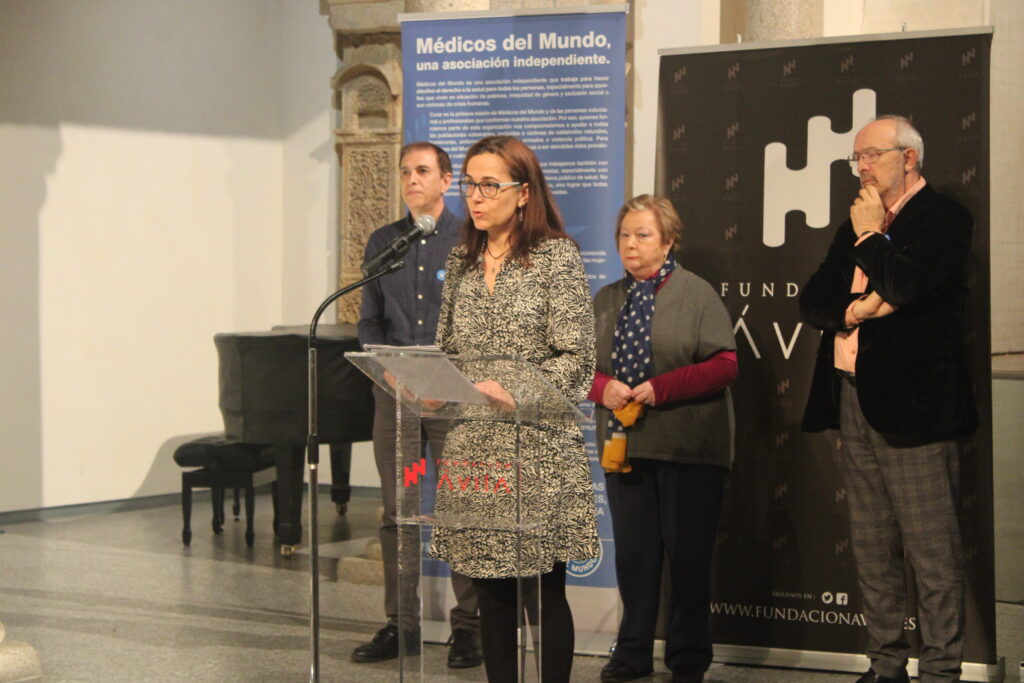From Thursday 18 January 2024 until 17 February, the Palacio Los Serrano in Ávila will host the exhibition comprising the works of the winner and finalists of the 26th edition of the Luis Valtueña Award.

This is one of the most important exhibitions in Spain in the field of photojournalism and documentary photography. Through humanitarian photography we can give a voice to those who are often ignored and, hopefully, inspire real change in our communities and in the world. With this aim in mind, the 26th exhibition of the Luis Valtueña International Humanitarian Photography Award, organised by Médecins du Monde, is coming to Ávila. 41 images that are not only visual testimonies of painful realities, but also a call to action.
During the inauguration at the Palacio Los Serrano, the president of Médicos del Mundo Castilla y León, Cristina Pino, said that the Luis Valtueña Award “is the flagship of our organisation, which was born as a tribute to four aid workers who lost their lives in their humanitarian work in the 1990s”.
Ricardo Angora, a psychiatrist and aid worker with Médicos del Mundo, pointed out that with this competition and this exhibition “we also want to raise awareness of the aspects of populations suffering the consequences of conflicts, of dangerous and difficult migratory routes until they reach areas where they can be taken in, but we also want to offer a positive vision in the sense that we humans have the capacity to overcome all difficulties. Perhaps sometimes it is difficult for us alone, but with the support of international solidarity, this can be achieved”.
Joining Cristina Pino and Ricardo Angora at the opening of the exhibition were Justo Gómez, who collaborates with Médicos del Mundo, and the president of the Fundación Ávila, Dolores Ruiz-Ayúcar.
Images from 94 countries were submitted for the award, which recognised the Spanish photographer María Clauss for her work ‘Donde no habite el olvido’ in which she uses photography as a means of recovering memory, portraying the people who were repressed after the Spanish Civil War in the province of Huelva.
The Spanish photographer Santi Palacios, a finalist in the competition with his work ‘The Massacre of Bucha’, portrays the Dantesque scenes he encountered after the departure of Russian troops from this Ukrainian city, which has become a symbol of the human rights violations in that armed conflict.
The prize has also travelled to Armenia, recognising as a finalist the artist Nazik Armenkyan, who with her lens masterfully focuses on an invisible reality, that of the women in her country with HIV, infected by their husbands and doubly victims, since due to tradition or religion they cannot talk about what they are experiencing.
Federico Ríos was recognised as a finalist in this edition for his work ‘Migrants crossing the Darien Gap’. This pass, made up of a steep jungle between South and Central America, is crossed every year by thousands of people who suffer all kinds of calamities on their way to reach the American dream.
“The most painful thing is how the world has decided to look the other way and ignore migration, which is not a matter of small numbers”, emphasises the photojournalist.

Finally, one can see an image of the jury’s special mention to the Mexican Sáshenka Gutiérrez Valerio, for her series Jódete cáncer, in which she makes visible through Sandra, a survivor of a double mastectomy, the scars of this disease, while at the same time questioning the current standards of beauty.
The exhibition continues to attract the attention of the public in its second year of touring, after having visited several cities in Spain and the Instituto Cervantes in New York in 2023.



